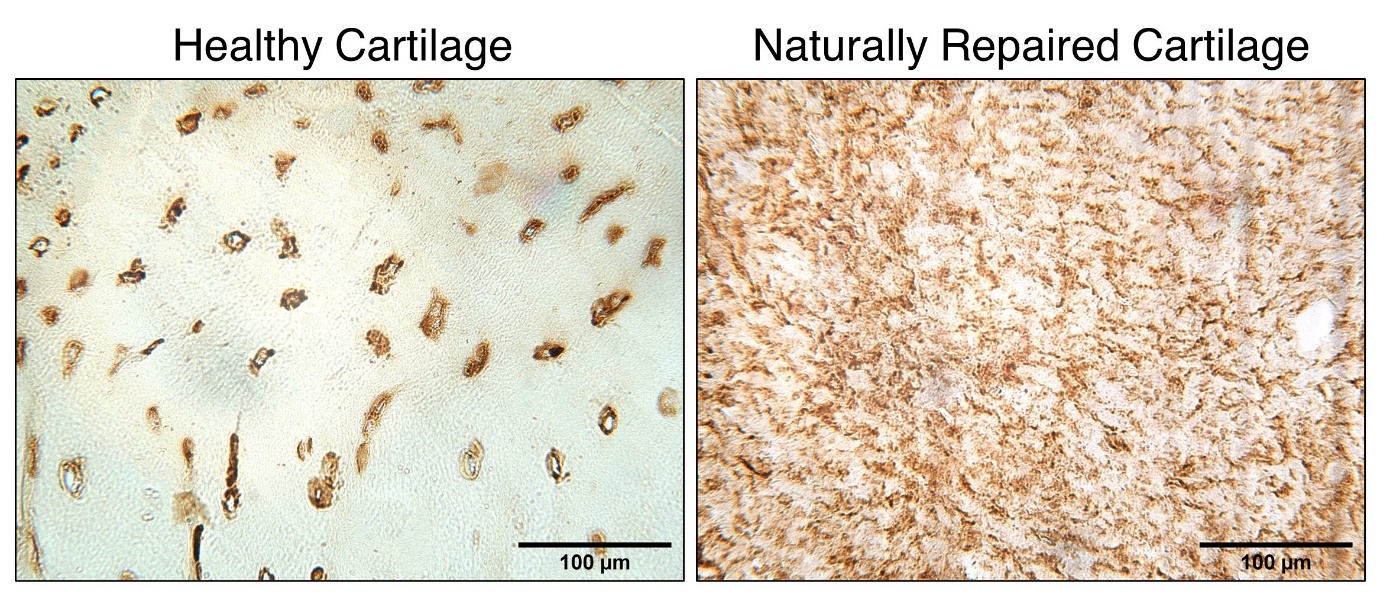SPONTANEOUS HEALING OF ARTICULAR CARTILAGE (SHARC): THE POTENTIAL ROLE OF PERLECAN.
John Garcia, Helen McCarthy, James Melrose, Jan Herman Kuiper, Sally Roberts.
Funded by Medical Research Council & Versus Arthritis
In last year’s issue of the Orthopaedic Institute Report, we introduced early evidence that cartilage does have some ability to repair itself after it has been damaged, which is contrary to scientific dogma.
The different molecules that are involved in this natural repair process have not yet been fully identified yet, but we believe a molecule called “perlecan” could play an important role. In the cartilage of healthy adults, perlecan is restricted to being only around chondrocytes (cells found in cartilage), where it helps cells interact with the cartilage surrounding it through signals.
We found that in naturally repaired cartilage, on the other hand, perlecan tends to be more widespread throughout the cartilage, which is similar to the distribution found in the cartilage of developing embryos. This suggests that embryological processes could be involved in the healing of adult cartilage.
More research will be required to further understand the role played by perlecan and whether it could be harnessed to help guide cartilage tissue repair in patients with damaged joints.
Detection of perlecan (shown as brown staining) in healthy cartilage and naturally repaired cartilage.
